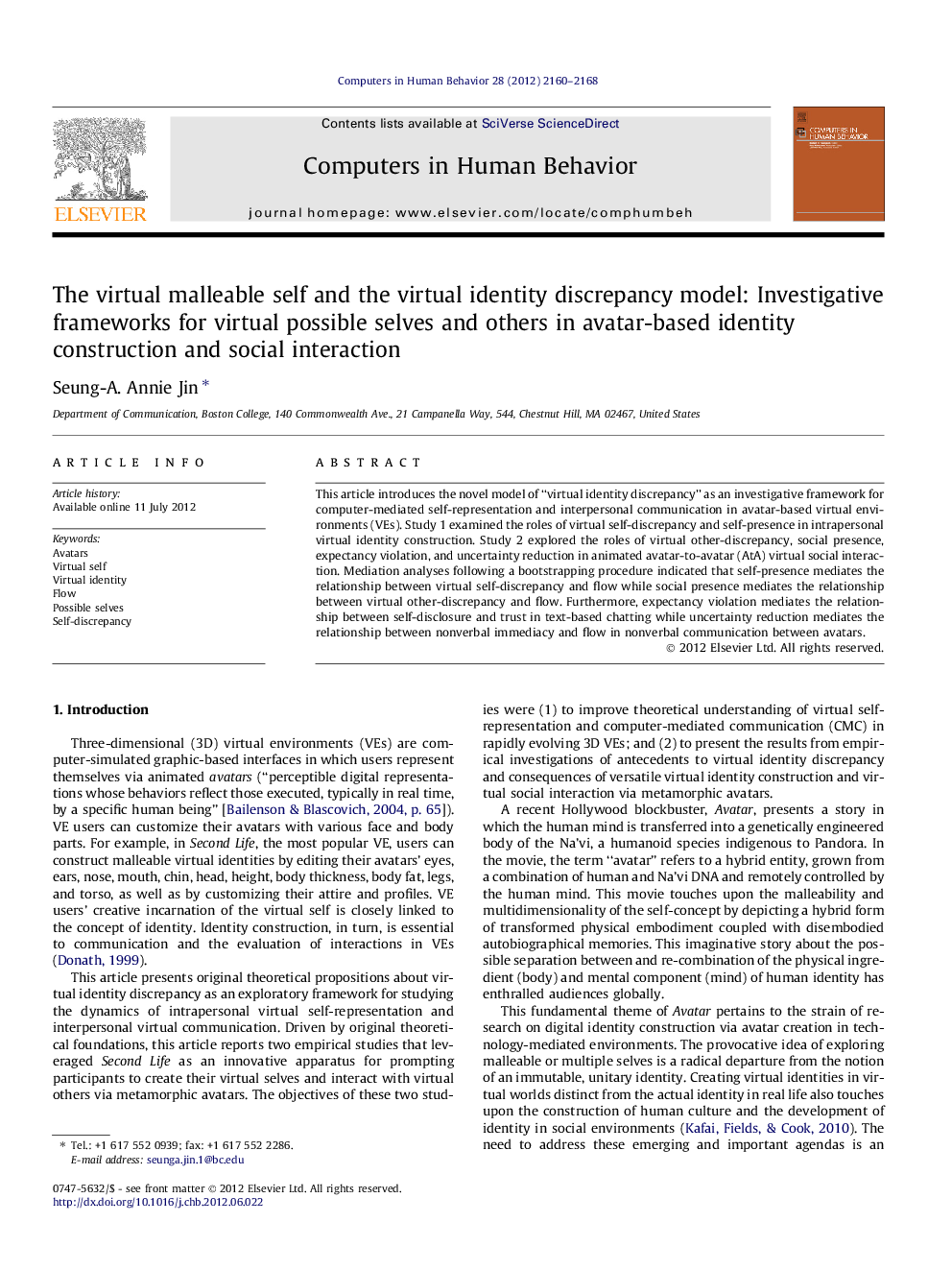| Article ID | Journal | Published Year | Pages | File Type |
|---|---|---|---|---|
| 351303 | Computers in Human Behavior | 2012 | 9 Pages |
This article introduces the novel model of “virtual identity discrepancy” as an investigative framework for computer-mediated self-representation and interpersonal communication in avatar-based virtual environments (VEs). Study 1 examined the roles of virtual self-discrepancy and self-presence in intrapersonal virtual identity construction. Study 2 explored the roles of virtual other-discrepancy, social presence, expectancy violation, and uncertainty reduction in animated avatar-to-avatar (AtA) virtual social interaction. Mediation analyses following a bootstrapping procedure indicated that self-presence mediates the relationship between virtual self-discrepancy and flow while social presence mediates the relationship between virtual other-discrepancy and flow. Furthermore, expectancy violation mediates the relationship between self-disclosure and trust in text-based chatting while uncertainty reduction mediates the relationship between nonverbal immediacy and flow in nonverbal communication between avatars.
► The virtual self refers to “the technology-mediated self simulated in virtual environments”. ► Self-presence mediates the relationship between virtual self-discrepancy and flow. ► Social presence mediates the relationship between virtual other-discrepancy and flow. ► Expectancy violation mediates the relationship between self-disclosure and trust. ► Uncertainty reduction mediates the relationship between nonverbal immediacy and flow.
